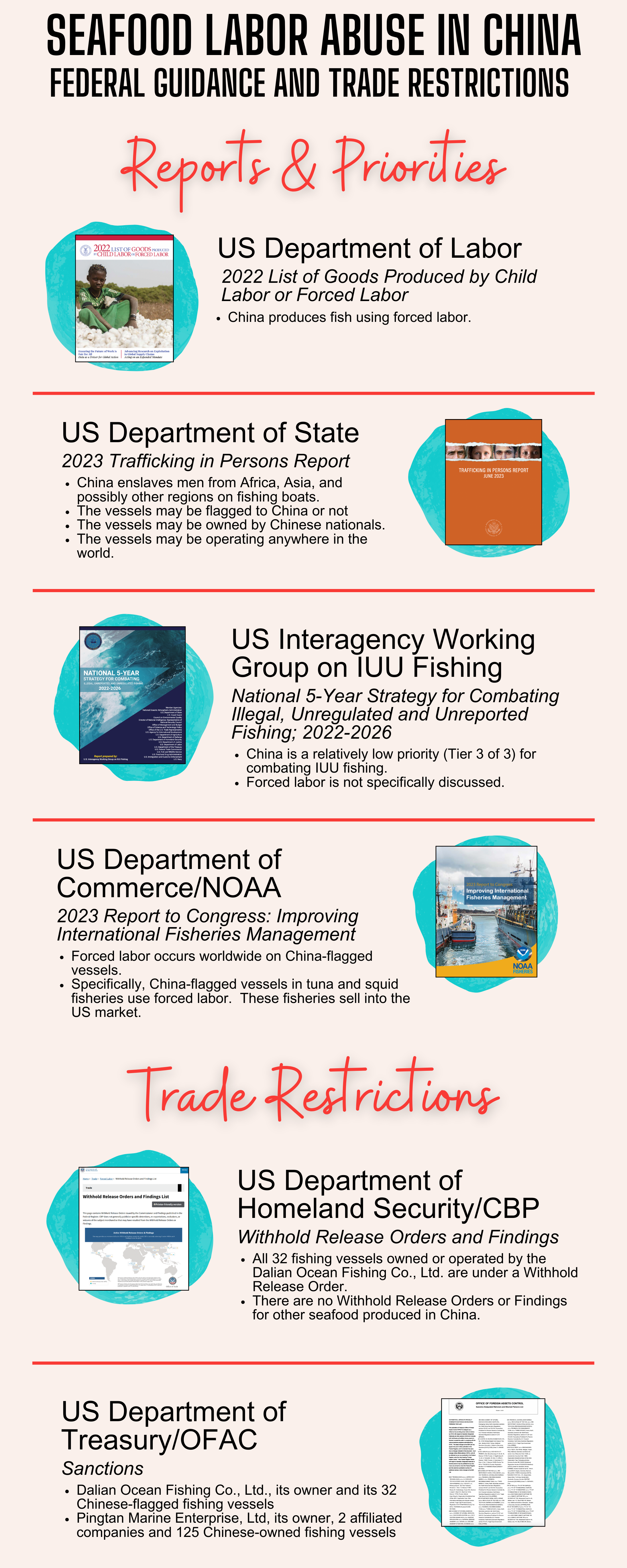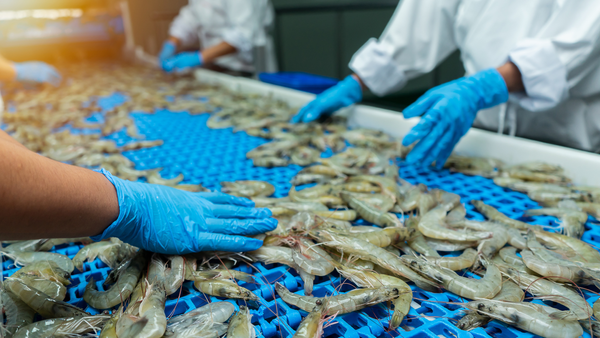Why Diplomacy on China’s Forced Labor has Failed Traders

Bombshell reporting this week on China’s abuse of forced labor in seafood has erupted into finger-pointing and calls for action across industry, service providers, advocates and even Congress. A quick aside: This is the important ‘out loud’ part of how any industry evolves and becomes more responsible over time. Reacting to new information shows progress, not failure and we hope the public will support this growth by eating more seafood, not less.
Back to the topic at hand: One group that has remained silent so far are the federal agencies that work in this space, likely because China's labor abuse in fisheries is old news for them. The Department of State and Department of Labor have long documented the global use of forced labor in manufacture and trade of all commodities, including seafood. Even NOAA recently joined in, adding forced labor to the list of topics covered under its biennial report on illegal fishing. These reports feed into a wide array of diplomatic processes and serve their intended role well, but last year Congress directed government to start leveraging its suite of federal reporting on forced labor to better manage seafood trade. It sounds like a reasonable request: you have extensively researched this topic, now we want you to put that knowledge to work to stop the trade of goods made using forced labor.
Eager to help industry de-risk imports, we took the direction from Congress as our own and started reading through every report to see what alerts could be added to our software that would help industry identify potential risk. Nine months and hundreds of pages later, the unfortunate verdict is in: Federal reporting as it exists now is incoherent for trade and the real, tangible trade restrictions appear unrelated to these reports. We used China as a case study given the relative breadth of reporting. Here is what recent federal reports that assess forced risk in China’s seafood supply chain have to say at a high level, and what concrete trade restrictions are currently in place related to Chinese forced labor in seafood:

Making sense of multiple far-reaching diplomatic reports is an unreasonable expectation for industry. Digging deep into the Department of State, Labor and NOAA reports (in some cases reading all of the citations in full was necessary) we found details specific enough for trade flagging, but is worth doing? In contrast to the high-level proclamations about forced labor risk in China’s seafood supply chains, the interagency working group ranked China relatively low on their IUU priority list, and there are only related trade restrictions in place against two Chinese companies, their owners and assets.
With no indication that agencies are using these reports to flag risk in the ways we could for industry, we decided to hit pause on this effort. Our focus is on supporting compliance–not policing. If the government were to issue actionable guidance on specific at-risk fisheries, vessels or other factors tied to trade data and state that these would be subject to additional scrutiny it could make a huge difference in altering supply chains. As it stands the best guidance is to stick with what we know is actually banned via Withhold Release Orders, Findings and Sanctions, but we will keep watching this important space.





